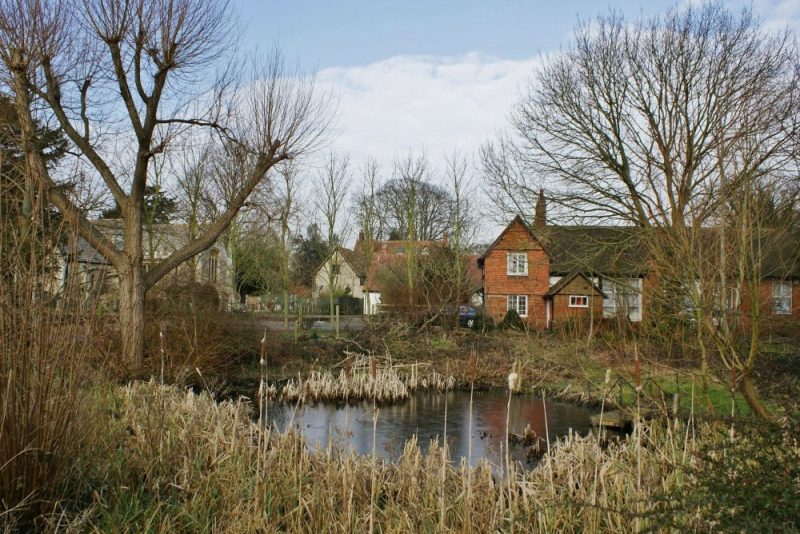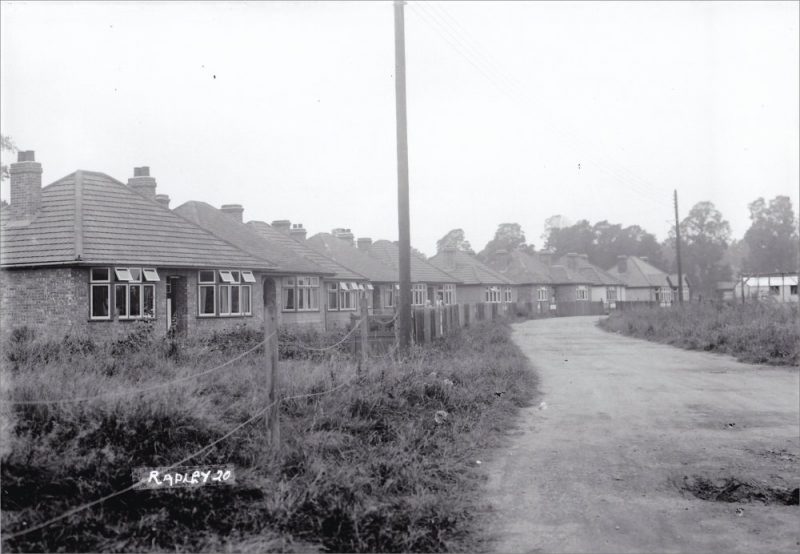All the Radley History Club books referred to below are available to buy from the Publications section of this website or from Radley Village Shop.
Click on an image to see a larger version, which will open in a new window.
About Radley

A postcard with this photograph is one of the series of Radley postcards on sale at Radley Village Shop.
Radley has a rich history. You can read a brief history of Radley here, or for a more detailed history, see the Club’s book The History of Radley.
- There is archaeological evidence of continuing human occupation in the Radley area since the Mesolithic era (8000–4000 BC).
- There are 32 entries for Radley on the National Heritage List for England maintained by Historic England. These range from Radley Church, parts of Radley College, various farmhouses and cottages, to the Scheduled Ancient Monument sites at Barrow Hills and Gooseacre Farm.

Reproduced with permission from Oxfordshire County Council – Oxfordshire History Centre
Until the 1930s what is now called Lower Radley was the main part of the village – some distance from the church, vicarage, manor house on higher ground to the north-west. Today the main part of the village is on the other side of the railway line to Lower Radley, the result of development in the 20th century. The photograph shows New Road (opposite the pub) in the 1930s not long after the bungalows were built – their uniformity is striking compared to how they look today. In 2020, work began on two major housing developments in north Radley (The Lawns) and north-west Radley (Church Farm). Together these sites are scheduled to provide 510 new homes, on top of the village’s existing 1,000 or so homes (this figure includes 300 mobile homes).
Village emblem
The village emblem used today is a modern drawing of the heraldic shield seen on the Stonhouse monument in Radley Parish Church. The monument was commissioned by Lady Elizabeth Stonhouse in memory of her husband Sir William and her son Sir John, who both died in 1632. The Stonhouse family’s long association with the village is described in the Radley History Club book, Radley Manor and Village: a thousand year story.
The shield appears on the monument itself and on a stone plaque next to it. The blue hawks and black band with a leopard’s face between two stars are from the Stonhouse coat of arms granted in 1556. The origin of the red crabs and chevron is not known. The red hand in the middle of the shield is the sign of a baronet, a rank acquired by Sir William in 1628.
The village emblem is part of artwork by Hilary Frisby used on a large Millennium Map poster produced by Radley History Club in 2000.
Points of interest featured in the leaflet
Points 1 to 13 – From the pub to Radley College
Points 14 to 24 – From the pub to the River Thames

